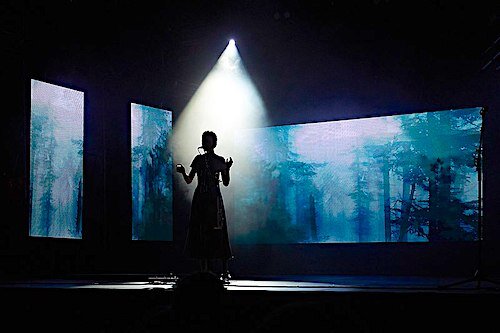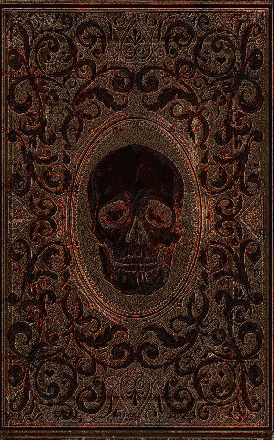Major Image
Bard, Sorcerer, Warlock, Wizard - 3 Level Spell
School: Illusion
Casting Time: 1 Action
Range: 120 ft
Components: Verbal, Somatic, and Material
Duration: 10 mInutes
Attack/Save: None
Reference: PH 258
Concentration
You create the image of an object, a creature, or some other visible phenomenon that is no larger than a 20-foot cube. The image appears at a spot that you can see within range and lasts for the duration. It seems completely real, including sounds, smells, and temperature appropriate to the thing depicted. You can’t create sufficient heat or cold to cause damage, a sound loud enough to deal thunder damage or deafen a creature, or a smell that might sicken a creature (like a troglodyte’s stench).
As long as you are within range of the illusion, you can use your action to cause the image to move to any other spot within range. As the image changes location, you can alter its appearance so that its movements appear natural for the image. For example, if you create an image of a creature and move it, you can alter the image so that it appears to be walking. Similarly, you can cause the illusion to make different sounds at different times, even making it carry on a conversation, for example.
Physical interaction with the image reveals it to be an illusion, because things can pass through it. A creature that uses its action to examine the image can determine that it is an illusion with a successful Intelligence (Investigation) check against your spell save DC. If a creature discerns the illusion for what it is, the creature can see through the image, and its other sensory qualities become faint to the creature.
At Higher Levels. When you cast this spell using a spell slot of 6th level or higher, the spell lasts until dispelled, without requiring your concentration.
This spell has a material component of a bit of fleece.
My Comments:
In my last spell review, I discussed Silent Image, the first in my posts on the School of Illusion. A lot of what I said there still applies: the duration is primarily the same, the size is only 33% bigger, but now there is more sensory information you can put in your image. So this time around, I’ll be less focused on specifics and more on the playability of Illusions.
Major Image is a much more robust illusion, and anything you tried to do with Silent Image and failed after a minute of your foes finally figuring out can perhaps baffle them for a lot longer with Major Image. But still, it’s just an illusion. It doesn’t exist. Anyone figuring out your trickery immediately knows that. Unfortunately, any character of high enough level to cast this spell (5th level, minimum) has commensurately skilled and experienced adversaries. With that higher level comes the greater ability to disbelieve their illusion. So unless you’re only using your illusion spells to captivate and con the plebian masses – and where’s the challenge, and XP, in that? – an illusion-caster has to be much more judicious when using this spell.
For instance, using the example from previous Illusion/Image posts (Minor and Silent), the illusion of a torch may have crackling flame, the smell of burning pitch, and even heat. But the heat is merely uncomfortable, no matter how close you put your hand to it. Turn this into a Wall of Fire, and it will make the less canny foes keep back (highly useful as a 3rd level spell) but those with any wit might test it, getting closer and realizing that the uncomfortable heat doesn’t burn, even when within a few inches.

Estonian violinist and singer Maarja Nuut at 2016 Viljandi Folk Music Festival
“Therefore, an illusionist has to be very careful when casting their Major Image. You have to know your enemies, plan carefully, and put your pride aside, almost expecting that the illusion will be found for what it is.”
Therefore, an illusionist has to be very careful when casting their Major Image. You have to know your enemies, plan carefully, and put your pride aside, almost expecting that the illusion will be found for what it is. In intrigue- and roleplaying-heavy games, this can provide a lot of opportunities and great effect. Set the scene knowing that your illusion will be disbelieved so that it creates more confusion and plays adversaries into your hands, rather than simple tricks that will likely lead back to you. That is the true power of an illusion, and all good stage magicians know it: use diversions.
As an example, let’s follow Lenar, an intrepid gnome bard, who wants to make sure that he’s uninterrupted while breaking into a sewer access so that he can rob a nearby jeweler. Lenar has planned for this by palming a high-priced component into Sigmund’s pocket, a seedy wizard and adversary of Lenar’s, and then waiting for him in the market. Once he’s in the right place, watching from a corner of a common house with his goblet, Lenar casts the illusion of a rampaging pair of barbarian orcs racing from Sigmund toward an illusory merchant who just came around the corner. It gets everyone’s attention, but Lenar is well aware the illusion will be found for what it is. Lenar also figures that it will get the guards’ attention, who know about Sigmund’s history, and will confront him. Knowing how Sigmund reacts at times like this means Lenar counts on him creating a scene where they find the stolen component, thereby implicating him in the distraction, leaving Lenar time to steal away into the sewer access.
Okay, so it’s a rough example, but Lenar’s player planned for this by paying attention in game and designing his ploy around that in-game knowledge. The illusion was almost secondary to the plan, but it was the lynchpin that would allow him to get away with it, scott-free.
This is where a PC illusionist has to have good communication with their DMs about how illusions will be used in the game. If you’re in more of a hack-and-slash game, you might want more versatility. In an intrigue-laden story, there may be more opportunities to shine. You can level up your game by collaborating on how to use illusions to their best. It’s so satisfying when a cunning PC has set up a layered plot based on judicious (and relatively low-level) illusions that wins the day and the reward.
Therefore, illusions are often not the best spell for direct confrontation. By the numbers, the foes you face who are proportionate to your level, even mundanes with an average Intelligence, have close to a 50/50 chance to disbelieve. For example, an illusionist with a 20 in Intelligence has a save DC of 16. A 5th-level fighter with a 10 Intelligence just has to roll a 13 (40% chance) to Investigate and disbelieve the illusion. That’s not good odds if you’re counting on your illusion being the crux of your plan.
Honestly, that’s the way illusions should be. It’s not a combatant’s tool, it should be reserved for those casters (and those games) where roleplaying and crafty plans shine.
This thread on the School of Illusion will continue in the coming weeks as I progress further with more of the illusionist’s go-to spells.


Just thought I would pop in and note that part about how the duration changes to “until dispelled, without requiring your concentration” when cast using a 6th level spell slot. A 6th level spell slot is a heft resource, but permanent illusions are pretty cool. Given enough time, you could create an entire illusory city, or a theme park! A bard somewhere would do that, pretty sure 🙂